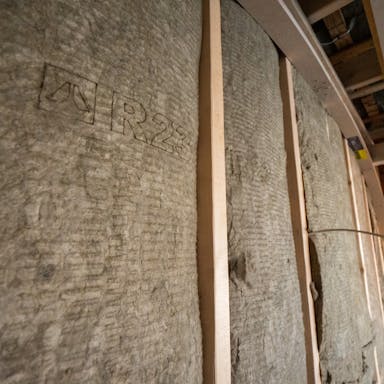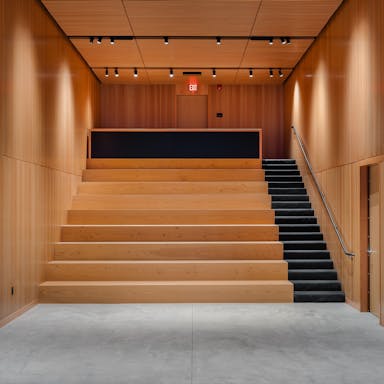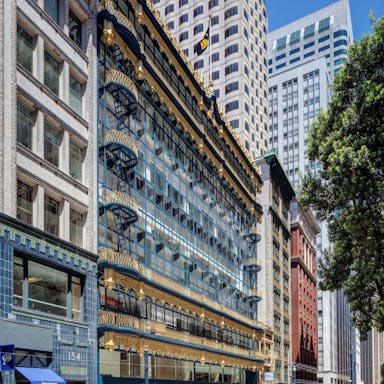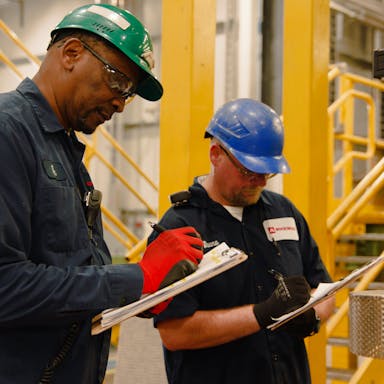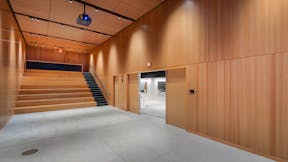AIASF hoped to renovate the 10,000-square-foot space landmark commercial space to serve as a public arena for architecture and design exhibitions, discussions, and much more while improving the indoor environmental quality (IEQ)—with a special focus on acoustics—for both staff and visitors.
Project Overview
The beautiful and historic Halladie Building in San Francisco features one of the first glass curtain wall façades in America—a groundbreaking architectural milestone when it was constructed in 1918. The architecturally significant landmark is still a sought-after space for businesses in the downtown core. The San Francisco chapter (AIASF) of the American Institute of Architects (AIA) has called the sixth-floor home for more than 30 years and decided to relocate to the ground floor to raise visibility and public awareness of architecture and the built environment in San Francisco through their Center for Architecture + Design.
Their aim is to increase community engagement with the general public and education around architecture. The space required a massive renovation to design it for use as both office and meeting spaces as well as a gallery space and lecture hall for the public to learn more about architecture, design, and the built environment. While sustainability and inclusion were a focus for the design team, improving acoustics was a primary driver of the project, reflecting the growing understanding of its role in the wellbeing, productivity, and comfort for its occupants and visitors.

The Goal
AIASF hoped to renovate the 10,000-square-foot space landmark commercial space to serve as a public arena for architecture and design exhibitions, discussions, and much more while improving the indoor environmental quality (IEQ)—with a special focus on acoustics—for both staff and visitors. The project also needed to incorporate sustainable building materials that would support a high-performance interior assembly.

The Challenge
Renovating historic spaces always presents unique challenges compared to new-build projects. First is the need to protect the integrity of the original design and structure while improving the performance and durability of the assemblies so they will continue to stand for generations to come. The Halladie Building was no different in that regard, and as one of the first glass curtain wall façades in the US, it required careful planning to ensure the important landmark was preserved. Second is ensuring the renovation meets the modern needs of its many different occupants, namely creating a healthy, safe, and comfortable environment for work and public engagement.
The architects were also tasked with specifying sustainable building materials that would support AIASF’s acoustics goals within the space; that meant designing around the existing architecture rather than optimizing the acoustical design for a room as you would with a new building.

The Solution
The design team at Aidlin Darling Design recommended ROCKWOOL AFB® evo acoustical fire batt to the project’s acoustician, Charles Salter, for the space’s insulating material in the interior wall cavities, specifically for absorbing sound energy within sound isolating walls. This recommendation was made and approved because of AFB evo’s many properties that supported the project’s objectives: primarily sound absorption and no added formaldehyde—both of which improve the health of the indoor environment for building occupants.
No-added formaldehyde (NAF) is an important aspect of AFB evo’s sustainability profile, which was equally important to project architects who take pride in their commitment to sustainable design practices. And the high density of stone wool insulation exhibits exceptional sound-absorbing qualities, helping to support optimal acoustic conditions within spaces.

“As an acoustician I know AFB evo provides exceptional acoustic performance,” says Salter. “The properties of ROCKWOOL products align seamlessly with the principles of acoustic design and the specific acoustic goals for this space, namely reducing distracting noise in public and working spaces and also ensuring privacy. The spaces with AFB evo in the walls achieved a noticeable reduction of 5 to 10 decibels. We set out to meet LEED criteria for acoustics with this project and AFB evo helped us achieve that goal. It is a valuable asset in achieving superior sound isolation and enhancing the overall acoustic performance of buildings.”
AFB evo, like all ROCKWOOL stone wool insulation, is also noncombustible; it can withstand temperatures up to 2,150oF without added chemical flame retardants. It works to contain fire and prevent its spread, and at the same time, it does not contribute to the emission of significant quantities of toxic smoke. Fire resilience was not a primary goal for the project, but it was a welcome feature and benefit when specifying AFB evo.
Stacy Williams, Executive Director AIASF, appreciates the expertise Salter brought to the project. “He and the architects helped us achieve our vision for a space that not only exemplifies design thinking and sustainability best practices, but also serves as a central hub for collectively envisioning and actualizing an inclusive future within our shared built environment,” she says. “And partnering with manufacturers such as ROCKWOOL who focus on education and product transparency helps individuals understand why architecture and urban design is so important to their well-being.”

Summary
Salter advises building professionals to address acoustics early in the design process, arguing it is just as critical to the creation of comfortable, healthy, and productive spaces as many other criteria of construction. AIASF embraced this principle with the renovation of their chapter office space, creating a space for their team and the general public that optimizes IEQ and thereby demonstrating what is possible with good design principles while leading by example. The design team’s specification of AFB evo was critical to meeting their many objectives including sustainability, optimized acoustics, durability, and the safety and well-being of occupants.
AIA San Francisco
San Francisco, CA
